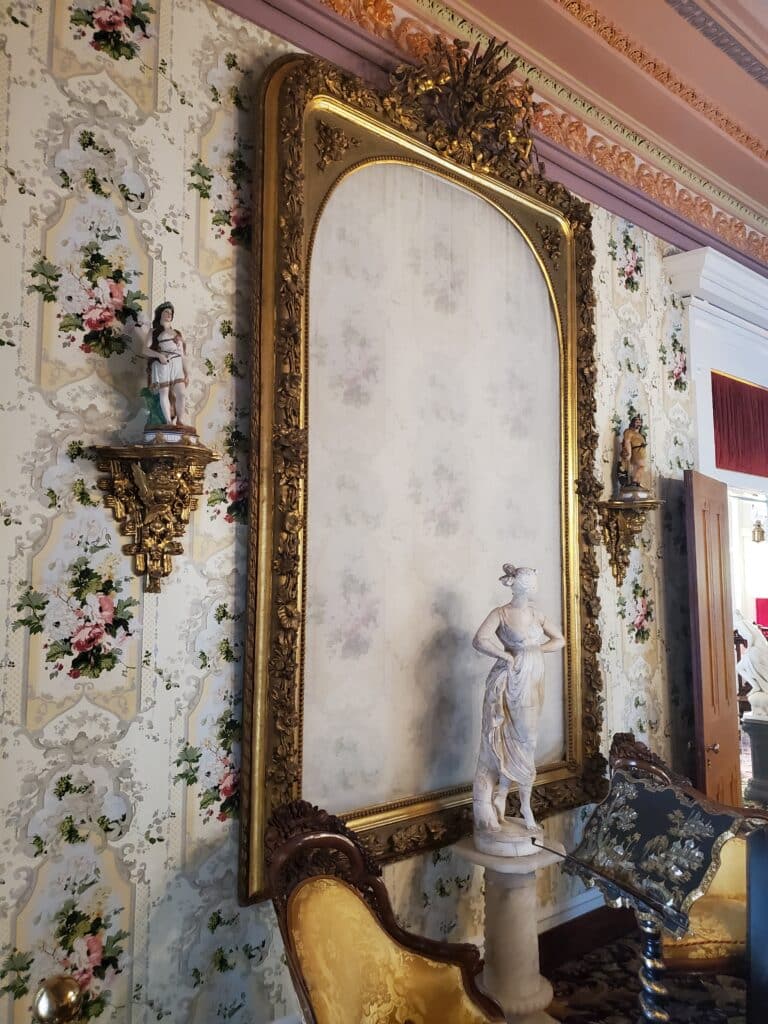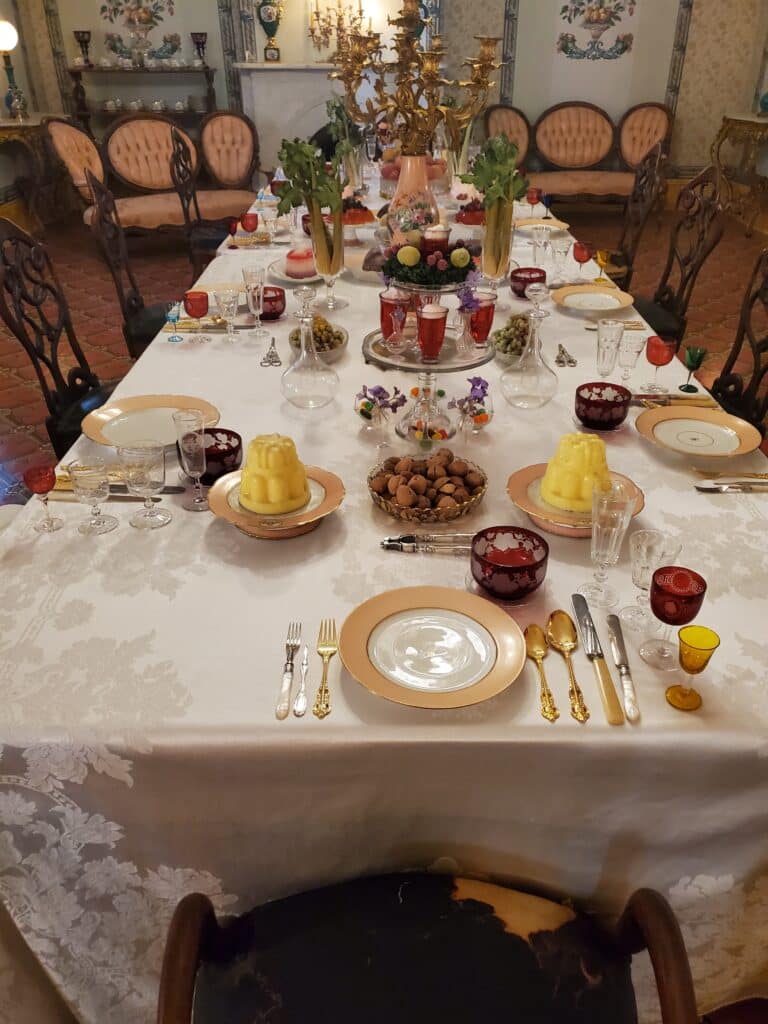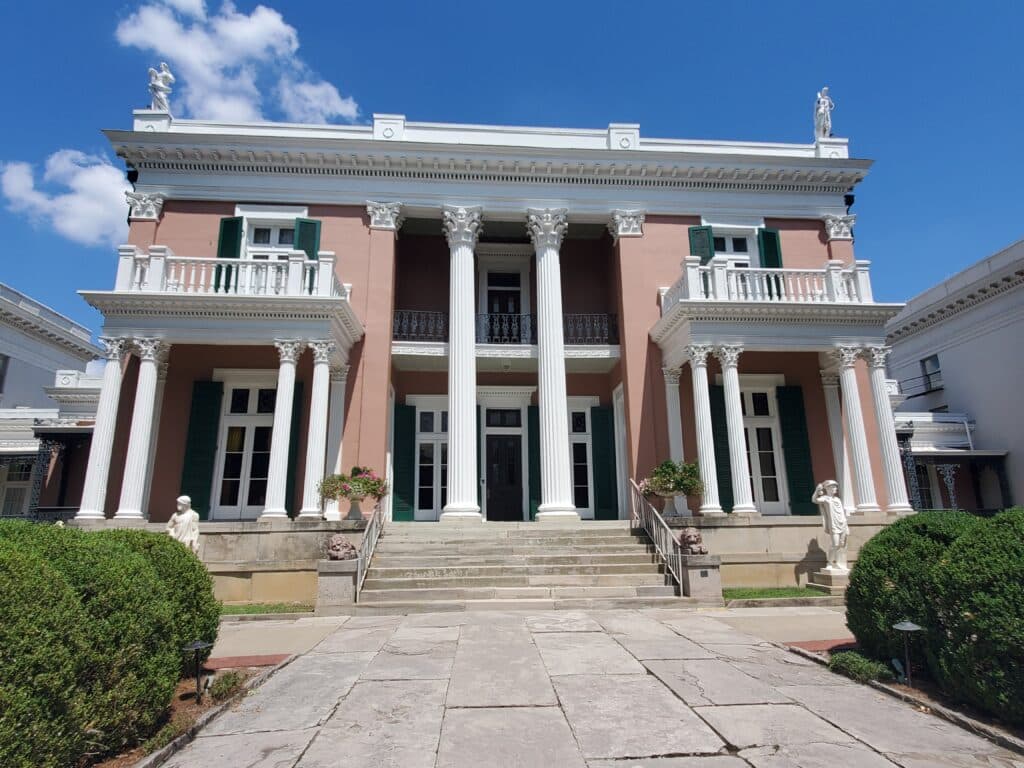The Artless Frames at Belmont Mansion
Belmont Mansion is a one-hundred-and-seventy-year-old mansion in Nashville, Tennessee. Its salmon-colored, exterior walls and grand interior staircase eloquently mask the fact that this house was built by Adelicia Hayes, the widow of one of the most successful slave traders in American history, who owned approximately seven hundred and fifty slaves over three plantations in Tennessee and Louisiana.

This home showcases the spoils of wealth amassed on the backs of the enslaved.
The first items I noticed on my tour were large picture frames hung prominently in each room but containing no artwork. Instead, the wallpaper shown through them. The docent explained that Mrs. Hayes had amassed an extensive art collection, using her wealth to travel Europe and send her treasures back to adorn the walls of her newly built home. Apparently, the restorers of the home now hoped the original art (auctioned off or given away at various periods of the home’s ownership) would return and the home would be ready to have them rehung in the same spot.
So, the frames, it seemed, were a statement of optimism. Of hope. In many ways, they became the metaphor through which I viewed this home as I grappled with its opulence and architectural significance juxtaposed against the wealth accumulated through the commodity they owned and traded—human beings.
Perhaps we were meant to gaze upon the artless frames with some sense of what was lost, and be nostalgic for the past. Or were those frames an invitation to look upon the past with imagination, hoping it was (or in some cases, was not) as we had learned in the history books?
Unlike those empty frames, we don’t have a blank canvas upon which to pose historically important and morally relevant questions and just paint a new, more charitable picture. Some say it is unfair to judge past society’s understanding of morality through a modern-day lens. Okay, so instead I dare to envision what daily life and conversations might have been like to shed light on what the moral dilemmas might have included in the mid-1800s. [To be fair, the docent of this house graciously included slave stories in her tour.]

As I wandered into the dining room and viewed the table set for a grand social setting, I tried to imagine the conversations they might have had in the waning days of the Antebellum South as wine was served by Mrs. Eva Snowden Baker, the personal slave, and maid of Adelicia Hayes. Would they have entertained news of approaching Union soldiers who were fighting for Mrs. Baker’s freedom? Would they have strategized how to sell the cotton being frantically harvested for a profit before being destroyed by either side of the warring troops? Would they have asked Mrs. Baker’s opinion on the matter?
The grand double staircase leads to Adelicia’s room, where specially designed wallpaper hangs, wallpaper that depicts the story of Telemachus, inspired by Homer’s Odyssey. Telemachus supposedly described himself as “a weakling knowing nothing of valor.” What an odd thought for Adelicia to consider each night as she laid her head down to rest, surrounded by his battle scene. Adelicia has been described as a strong woman, a woman before her time as she required a prenuptial agreement with her second husband to protect her immense wealth, earned as a widow after the death of her first husband. I imagine Adelicia lying awake at night, devising schemes to protect her wealth ($3M in 1860, worth $101M today), a perfectly human reaction to the torrents of war and in a world that allowed women few alternatives.
Nonetheless, did she ever consider the valor it would take to free her slaves? Did she ever scheme over ways to confer freedom upon her owned servants by funding a massive freedom train with her wealth? Ah, such valor that would have required.
I have so many questions (those who know me will not find this notion surprising). Are matters of morality timeless or timebound? Is the evaluation of situational ethics useful in understanding the past? Or the present? And always these questions lead me to inquire of my own heart: what would I have done in similar circumstances without the benefit of 21st-century sensibilities?
In these, our American conversations, it seems time does not heal all wounds, but if we envision a different future, it might yield us some grace and an opportunity to discuss the past with eyes opened on the truth. Assessing the past honestly is important to understanding the future fully.
As I passed the artless frame on my way out, I entertained a grand idea. Perhaps the restorers of this home would consider hanging a portrait of Harriet Tubman in one of those opulent frames. Ah, such valor.
For me, those empty frames are mere metaphors for what could be, what we might learn from the past in order to assess and design the future with more sagacity and less nostalgia. And as I stared at those empty frames, still I say, in the (abridged) words of Carl Jung: I am not what I have done, I am what I choose to become.



